23 January 2020
Military Music in Québec City
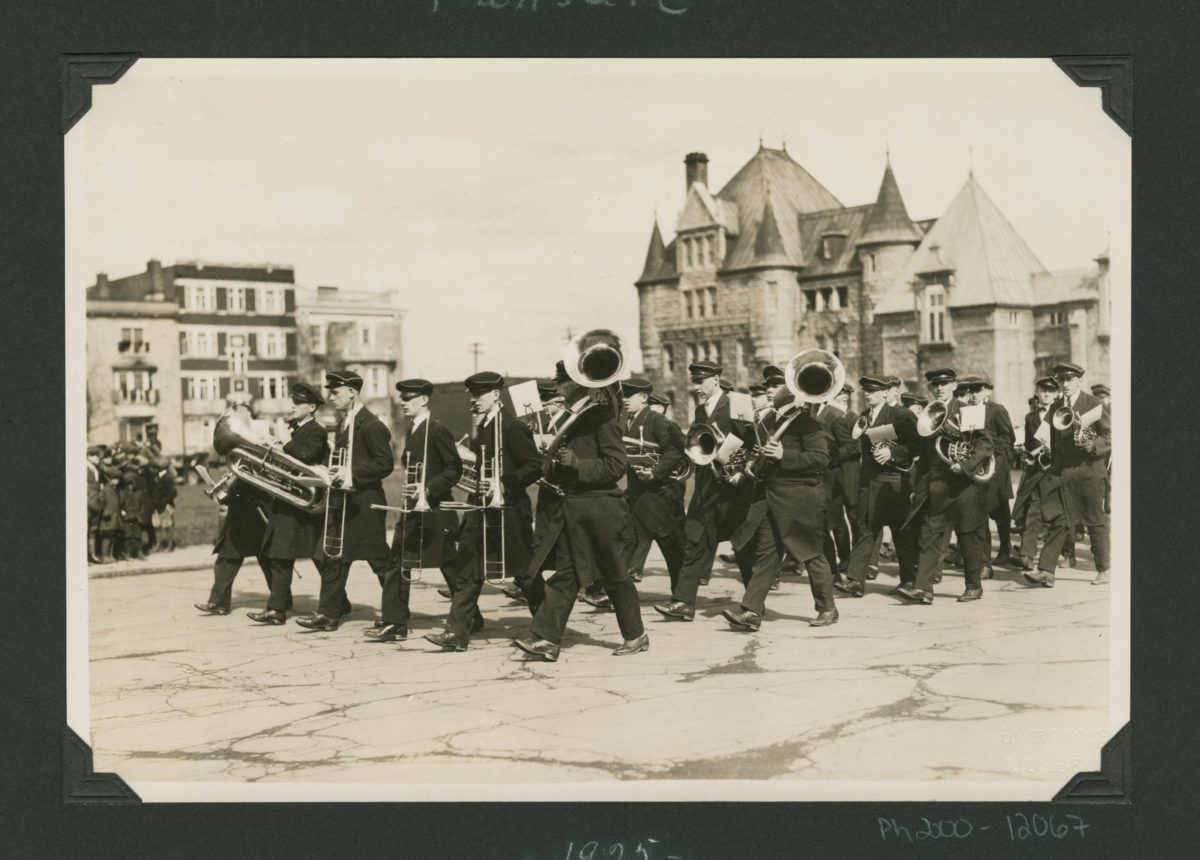
Music has always been part of military life. Traditionally, its drums and structured rhythms even played a key role in military actions, leading the march and various army tactics during combat. But did you know that, beyond its use on the battlefields, military music has strongly influenced Québec City’s civilian music? As a garrison city, it is treated to many parades, public performances and other military “tattoos”. Regimental bands were therefore at the heart of Québec City’s musical life between the 17th and 20th centuries.
Musical Life in New France
Military music has been ever-present in Québec City since the New France era. But was it really music? At the time, it was limited to fifes (small wooden flutes) and drums.
The high and powerful timbre of the fife sets the melody, to which the soldiers can sing along. The drums, at the front of the column, set the pace—the number of soldiers’ steps per minute—with precise times for slow and rapid marches. Beyond just speeding or slowing the march, they can also recall scattered forces to the banner. Drum players wear distinctive blue and red uniforms with full regalia. Their painted blue drums would be decorated with yellow fleurs-de-lis.
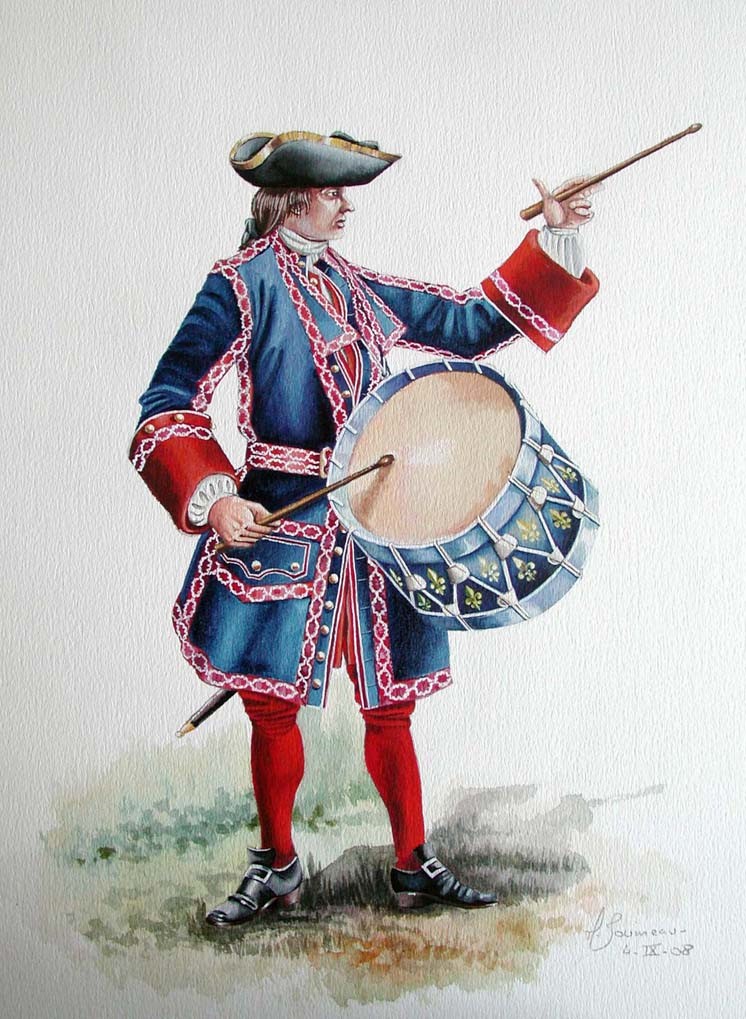
In the 1660s, each company of the Carignan-Salières Regiment (the first dedicated troops in Canada) included two drums and a fife. François du Moussart, Gugnot dit Le Tambour and trumpeter Jean Casavan (ancestor of world-renowned organ builders Casavant Frères) are among Canada’s first military musicians. A few decades later, the grenadier companies of the infantry regiments included two fife players.
Military musicians also play an important role among the civilian population. The soldiers play the drums and flutes at different parties or celebrations. For example on the Epiphany, and even more importantly, in everyday life! Every morning, at daybreak, the guard duty drum plays from the rampart, reciting “La Diane,” which acted as reveille for the garrison, and, by extension, that of the citizens. “L’Assemblée” was heard several times in the day to warn soldiers to join their corps for exercises. “La Retraite,” which plays at sunset, warned the public of the coming closing of the city gates, while “L’Ordre” informed people that the gates are closed. Another drum piece, “Le Ban,” announced the reading of orders and regulations, and even auctions.
From French to British Influence
The Seven Years’ War and the massive arrival of British troops obviously influenced the practice of military music, both in Québec City and other garrison cities. From then on, military music would be performed by regimental ensembles from the British army. While the drum and the flute were already well known to the local population, new instruments appeared. In 1761, the 78th Fraser Highlanders arrived with at least 30 bagpipe players and drummers. Along with the other Highland companies stationed elsewhere in Canada, these musicians and their successors helped maintain the bagpipe tradition. The bugle gradually replaced the drum in light infantry and rifle regiments.
By the 18th century, larger regimental bands were sent to Canada. Mrs. Simcoe, wife of the first lieutenant governor of Upper Canada, organized a dance in Québec City in 1792, to which forty people were invited. In her diary, she noted that the musicians of the 7th Royal Fusiliers “all love music, dance and doing balls and concerts”. They spend as much money as other regiments usually spend on wine. It makes them very popular in this place where dancing is a prized activity.”
Military Ensembles
In the 19th century, there were two types of musical bands associated with the military: manoeuvre music and military bands.
Manoeuvres are musicians hired to keep the rhythm in military actions. They are considered members of the force. They are integrated into combat training, receive military training and serve as signallers. They include drummers and fife players from the infantry regiments, as well as trumpets and bugles from the cavalry regiments. As for the military bands, they were initially unofficial formations composed of professional civil musicians, but after 1811, they were incorporated into the army.
Between 1764 and 1839, there were no less than 34 military bands attached to the British army in Québec City, including the formations of the 24th Regiment of Foot—later known as the South Wales Borderers— (1789-1800), the 1st Regiment or Royal Scots (1812-1815) and the 60th Royal American Regiment (1787-1803 and 1817-1823). In addition to regular army formations, a few militia units also had their own musicians. In Québec City, only the military band of the Québec City artillery appears to have existed between 1760 and 1836.
The Influence of Military Musicians in the 19th Century
Military musicians are considered pillars of Quebec’s musical profession. In Québec City, a garrison city (like York / Toronto, Kingston, Montreal and Halifax), they were part of the local musical culture. Many taught, played as church organists, sell sheet music, or even made, repaired, and sold musical instruments. For example, Jean-Chrysostome Brauneis settled in Québec City in 1813 as a musician in the 70th Infantry Regiment. His duties gave him time to teach music and work in the instrument trade. In 1831, he became director of the Quebec Artillery Regiment, but died the following year during the cholera epidemic that decimated Québec City.
Military musicians played with symphonic societies at balls and various events. Since brass and percussion instruments require less time to learn than string instruments, the use of flutes, oboes, clarinets, horns, trumpets, bassoons, snakes (low-pitched wind instruments), timpani and triangles spread during the 19th century. In addition, the powerful sound of these military ensembles, notably thanks to the horns and the trumpets, made them very popular with the people of Quebec. Military music ensembles took part in numerous concerts and civil parades. In short, these artists have been very present in the cultural life of Quebec.
When the garrison left Québec City in 1871 to return to England, a void was created in the field of harmonic music, particularly due to the difficulty of recruiting qualified musicians and conductors. Some of these military musicians, fortunately, decided to stay in the country and formed musical ensembles within the voluntary militias. A remarkable conductor, Joseph Vézina, conducted the music for the 9th Battalion of the Voltigeurs de Québec from 1869 to 1879. He would eventually become the first director of the Orchestre symphonique de Québec.
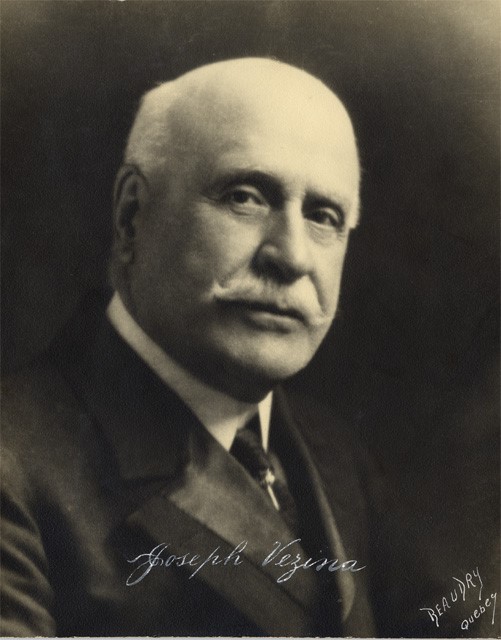
An Eventful 20th Century
The first full-time army corps was the Royal Canadian Artillery. It was formed at the Citadelle of Quebec under the name Battery B of the Royal Canadian Artillery, and was directed by bandmaster Joseph Vézina from 1879 to 1912, succeeded by Charles O’Neill.
In 1922, the new Royal 22nd French-Canadian Regiment received authorization to found a military band. This new body of regimental music was comprised of the 20 players of the Royal Canadian Artillery Music of the Canadian Garrison and its director, Captain Charles O’Neill. The instruments and music library of the old formation were also inherited. Since its founding, the band of the Royal 22nd Regiment has performed regularly in Québec City, notably on the Dufferin Terrace, at the Citadelle and on the Plains of Abraham, as well as in Montreal.
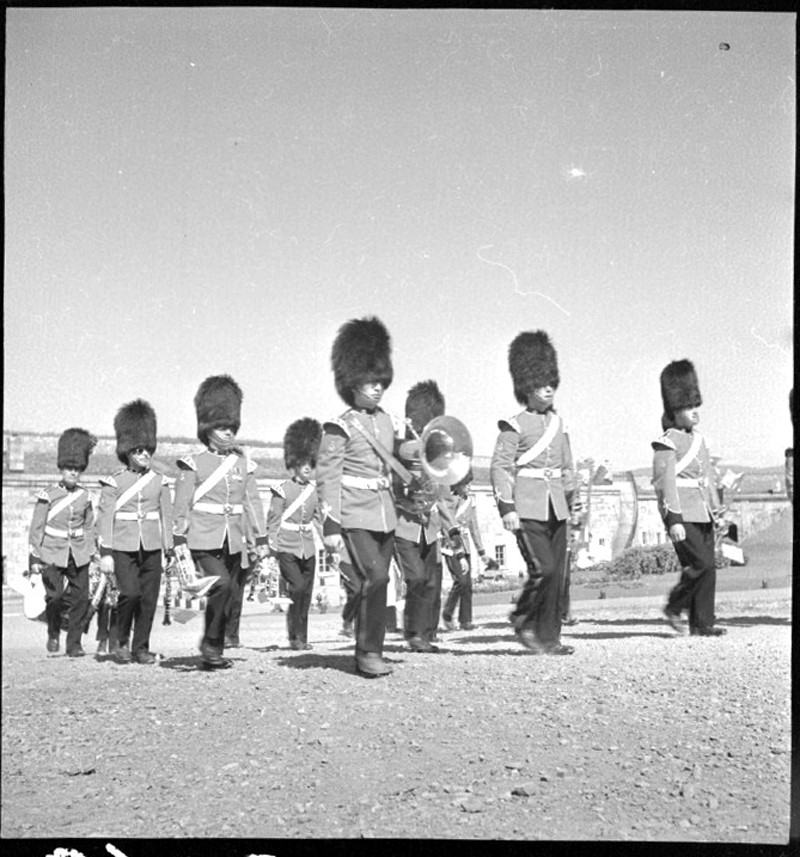
After World War II, a restructuring of military music ensembles across the country began. In March 1947, all the active musical corps of the regular armed forces were dissolved. Among the regular forces, the formation of 17 musical corps in the navy, the army and the airforce were authorized. The Canadian primary reserve forces were authorized to train 64 bands, with 11 located in the Province of Quebec. As for the music of voluntary militias, 106 ensembles of 30 members each were allocated in 1951. There were also several police force bands.
After the unification of the Canadian forces in 1968, the military music ensembles of the regular forces were grouped into nine larger musical corps, comprising over 300 musicians. Only four army musical corps retained their unique identities, including that of the Royal 22nd Regiment in Québec City.
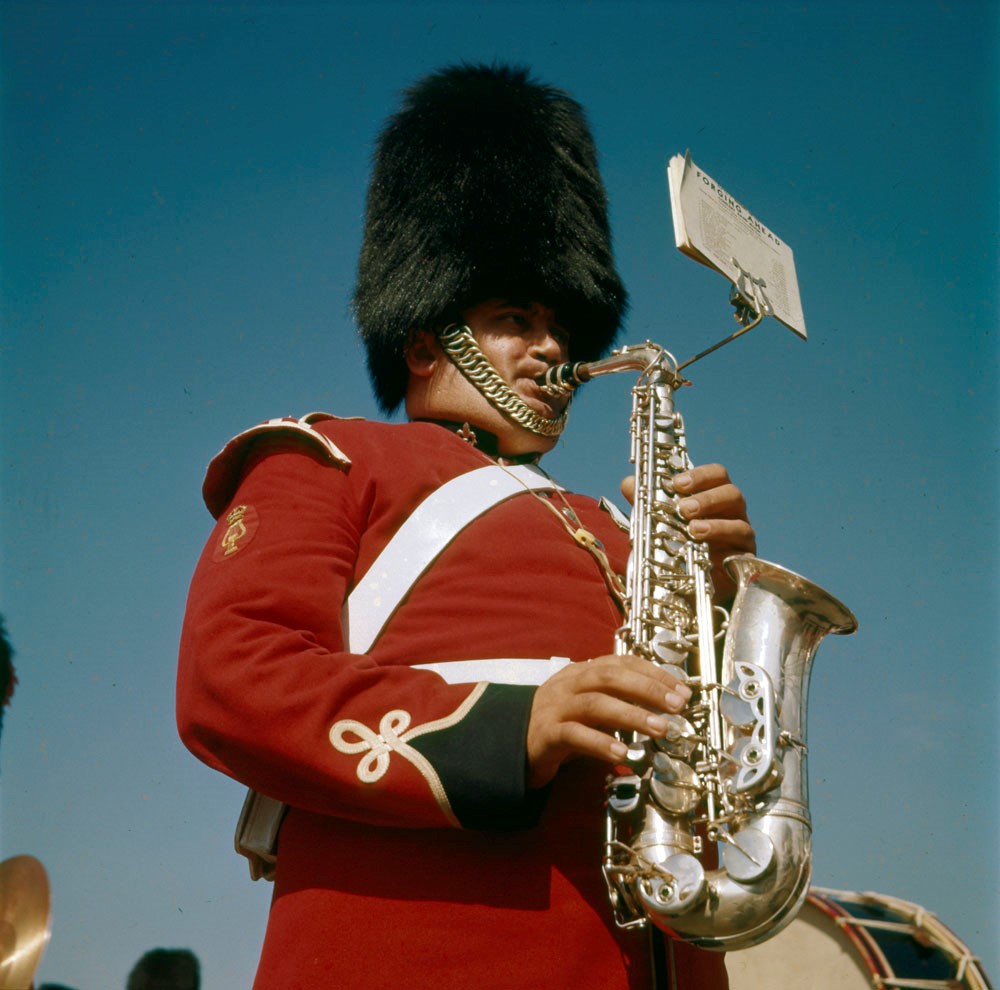
The musicians of the Royal 22nd Regiment often went abroad. For example, to England (1937) for the coronation of George VI, to Japan and Korea during the Korean conflict (1950-1953), again to Great Britain for the coronation of Elizabeth II. They also did frequent performances on the radio, and later on television. Naturally, the Music of the Royal 22nd is heard as part of the centennial celebrations of Confederation (1967), both in Canada and in the United States, and in particular during Expo 67. They marked the 350th anniversary of Québec City in 1983 and, the following year, the 450th anniversary of the arrival of the explorer Jacques Cartier in Quebec, as well as the visit of Pope John Paul II. In addition to military marches, the musical repertoire included arrangements of classical works, folk music, film music, musicals, jazz and popular music.
An International Festival
For fifteen years, Québec City hosted an important event: the International Festival of Military Bands. Founded in 1988, this festival brings together, in the heart of August, a large number of Canadian and foreign military musical groups, taking place in several historic places in the city. The Military Tattoo is the highlight of the event.
The 10th anniversary of the Festival coincided with the 400th anniversary of Québec City. For the occasion, the musical hosts of the event – the Royal 22nd Regiment and the Voltigeurs de Québec, welcomed ensembles of military music from nearly fifteen countries, including Belgium, Germany, Chile, Norway and Poland. The presence of the Red Army Choir at the event was widely noted. This 10th major edition allowed the Festival to acquire a truly international notoriety. Unfortunately, in 2013, the event was forced out of existence, having had its funding cut significantly.
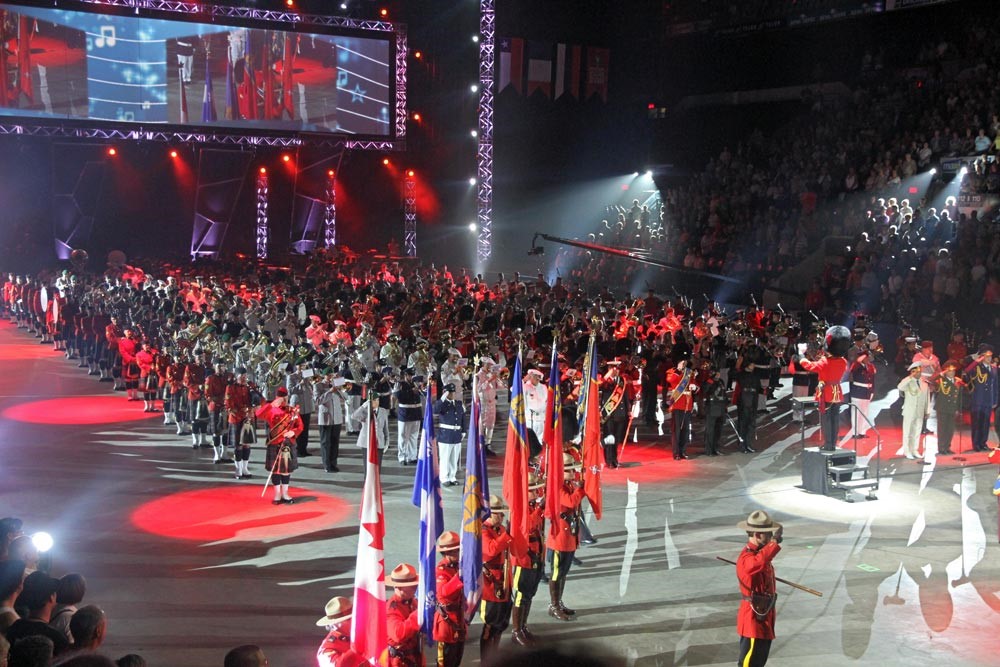
A Rich Musical Heritage
It’s clear that, throughout the 19th and 20th centuries, military musical groups based in Québec City performed during parades, state dinners, community concerts and many other events of local scope, national and international. They contributed to the influence of musical culture here and elsewhere by offering many performances, which were very popular and deeply appreciated by the people of Québec City.